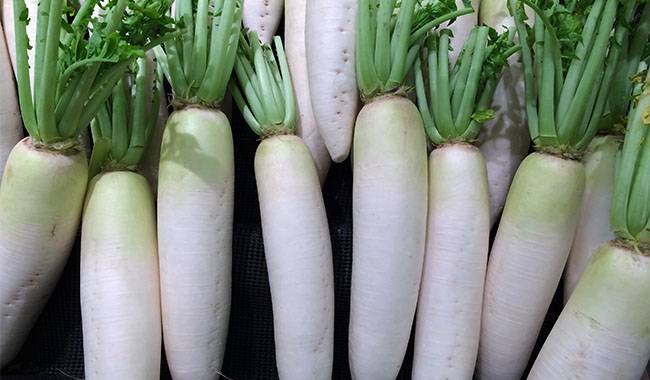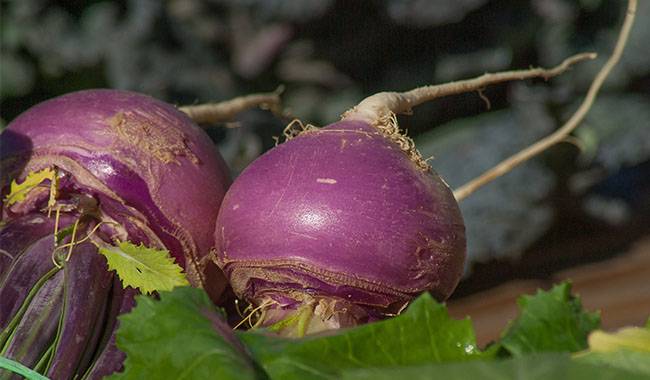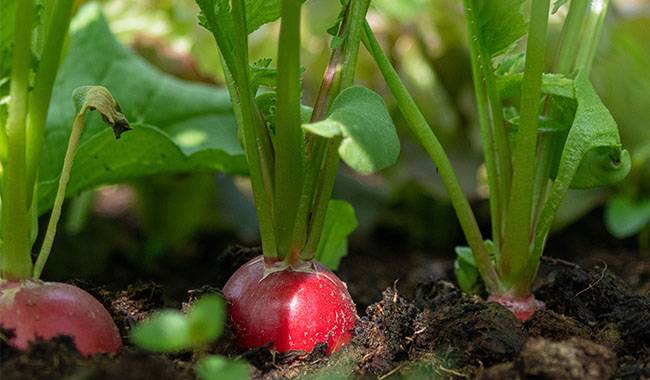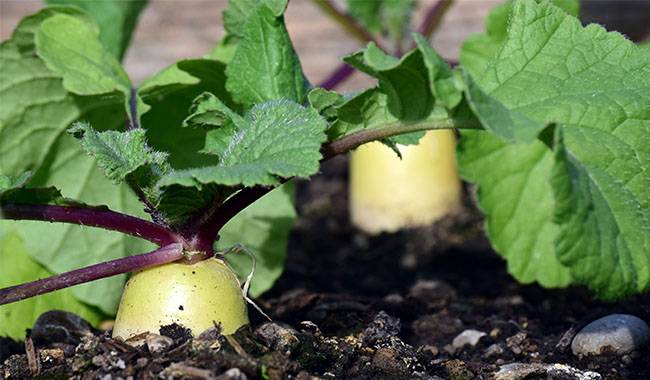
We are all used to growing radishes in spring, it is almost the first vegetable root to appear in salads, but not many people know that cultivating radishes in autumn is just as successful. However, agricultural techniques for growing vegetables in this period are somewhat different from those in the spring.
Let’s take a moment to understand what you need to do correctly in order to achieve a high yield of radishes in autumn. how to plant radishes is answered in this article.
ADVANTAGES OF GROWING RADISHES IN THE FALL
There are several advantages to growing radishes in the fall: First, root crops in the fall can be kept in the bed longer, so they retain their marketable qualities longer. You can’t rush the harvest until it’s really cold. Second, even if you harvest a little late, radishes are considered a very cold-tolerant crop, fully able to tolerate frosts below 32°F (0°C).
Therefore, you don’t have to worry too much about cold temperatures, which often happen in September and October. And another advantage of planting in the fall is that you can escape the cruciferous flea. As you know, this is almost the most feared pest of radish, and in this case, in autumn, because of the cold, it cannot manifest itself (but of course not 100%), therefore, the harvest will be complete and the chemical composition protecting it does not need to be applied.
GROWING CONDITIONS OF RADISH IN AUTUMN
Naturally, in order to get a good and tasty autumn radish, he needs enough water in the soil, abundant (or rather – moderate supply) of light and, of course, food in the ground. As for temperature, radishes are not fussy and will grow quite well at 62-66 °F (17-19 °C). Light? During this time of year, daylight is usually not that important.
This time of year, even radishes take advantage of this fact: with more than 13 hours of light during the day, the radish seems to forget that it has to grow rhizomes, grow above-ground parts, form flowering stems in a flash, and try to form pods with seeds as fast as possible. Don’t think that covering the radish in the sun and just hiding it in the shade will save the situation; in the shade, the radish will wilt and the root crop will not actually form.
As for the soil, just ideal for fall radish is considered a fairly fertile light loam, which reacts as weakly acidic, that is when the pH is 5.5-7.0. On more acidic soils, radish actually always suffers from cotyledons.
Important! If you plan to grow a variety of radish with small slender roots like carrots, be sure to prepare the soil with a perfect tillable layer of 8inch (20 cm).
An indispensable condition for obtaining a good radish crop is adequate soil moisture. Obviously, moisture in early spring will provide melting snow, but in summer you have to water yourself. If there is not enough water in the soil, radishes will form rhizomes with typical shape and color, but with unpleasant content: they will be rough, lack juice, have a bitter taste, and if there is little water, then you will not be able to get the typical “radish” shape. Splitting the watering is also not worth it (thick first and then light) and it will be reflected in the usual overstretching of root crops, sometimes quite pronounced.
WHEN TO SOW AUTUMN RADISHES?
As a rule, large-fruited radish varieties are characterized by a medium to late maturity and are best sown in late July or the first half of August. You will then form a root crop that is not only tasty and proper but also sufficient for storage. If you do not yet have a place to store them and you will eat them, they are called “have beds”, then sowing autumn radishes can be done near the end of August, even when schoolchildren go to school, if, of course, the fall will be warm and will not scare early frost with a snowfall.
PREPARING THE SOIL
For autumn radishes, a clean and tidy ridge will not be maintained without half a season of gardeners, and something must have grown on it. Radishes are like a secondary house, so you need to remember what has happened in the area before.
Fall radishes will grow perfectly in the bed where garlic, cucumbers, early potatoes, peas and beans, and tomatoes have been planted before. As you can see, the set is large, and in fact, you can sow fall radishes after any crop that has managed to escape from the bed by this time. However, there are also rather undesirable predecessors – these are radishes, turnips, cabbages, horseradish, and watercress, in general, all representatives of the cruciferous family, because they quickly accumulate common diseases and enemies that can be transmitted exclusively through the soil.
Personally, I do not recommend sowing radishes on fall plots, where other root crops have been grown before and have such negative experiences.
As for soil preparation, that can’t be delayed, summer is fleeting, dig over the soil immediately after one cultivation before harvest, remove all weeds and crop residues and make the dugout 25-35 grams of ammonium nitrate, 25-35 grams of calcium superphosphate and 35 grams of potassium sulfate, which I recommend in dissolved form, of course per square meter of bed.
If the soil on the plot is quite poor and depleted, it is recommended to apply humus or compost, usually, one bucket per square meter is sufficient.
After digging and adding the fertilizer, the soil should be well loosened, ideally to a depth of 7-8.5inch (18-21 cm), but this of course depends on the type of radish you will be using. If you plan to sow long-fruited varieties, it is recommended to increase the tillage depth (loosen the soil). After full tillage, you will need to water, preferably by sprinkling.
SPECIAL CHARACTERISTICS OF RADISH SOWING IN AUTUMN
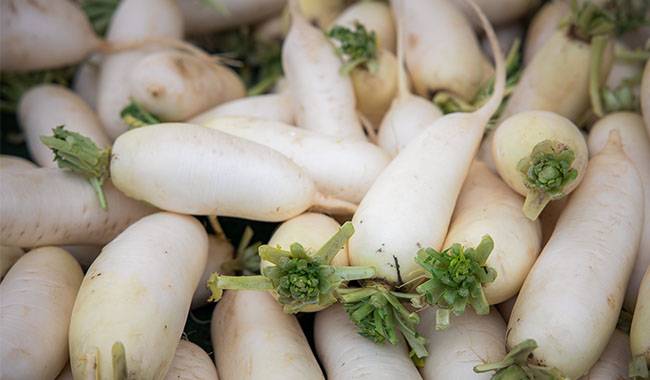
Unlike spring, radish sowing in summer and autumn has to be carried out a bit more sparsely, taking into account the final size of the rhizome of the sown variety and counting on maximum exposure to sunlight during the short daylight hours.
Here is an example: For large-fruited radish varieties, it is best to have 8 to 10 rows on a strip, while the distance between rows on the strip should ideally be 4-6inch (12-15 cm), 2-3inch (6-8 cm) between seeds in the rows, and 15-18inch (40-45 cm) between the strips themselves.
The standard sowing rate for fall radish seeds is about 1 gram per square meter. It is possible to have a little more (10-15%) (if not everyone knows, let’s clarify: in a gram of radish seeds there are up to 120-125 pieces, sometimes even more).
The ideal time to plant radishes is when the weather is wet and quite cool, if there is a fine rain, then the weather itself will help you. Before planting the seeds, soak them for 12 hours (usually overnight) in anticipation of the fine rain and then plant them in the ground.
Once everything is ready, we go to the bed, make a trench at 4-6inch (12-15 cm), slightly compact the bottom of the trench with our fingers, then water, preferably with a sprayer, and place the seeds at a distance of about 2-3inch (5-8 cm) (here it depends mainly on the variety of radish), gently, so that they do not shift, and sprinkle the soil. It is this way of sowing that better protects the soil from forming soil slabs, which will be difficult for new shoots to penetrate.
Important: Radish seeds should be sown at a depth of 0.6-1.2inch (1.5-3 cm). The depth depends on the soil: on heavy soil, 0.6inch (1.5 cm) is enough, on loose sandy soil, 1-2inch (2.5-5 cm), no more. If you put radish seeds very deep, it will delay the emergence of seedlings: breaking through the top, the above-ground part can come out later. But make an effort to deepen (with shallow planting) and the results of root crops can be ugly.
If we are not talking about a few acres, but a large area that you want to occupy with fall radishes, then it is better to calibrate the seeds in the soil before planting. Although this activity is not fast, then it will be easier to plant each section separately. Special sieves for seeds can speed up the situation, they divide the seeds into small pieces – about 3 mm, two to 2.5 mm, and less than two mm in diameter. Sowing each calibrated fraction separately, you will get and more friendly sprouts, and more arrangements of sown autumn radishes.
Of course, the sowing of radishes in the soil does not end all, starting with almost any less important work – it is the care of seedlings for growing plants until harvest. This care usually includes watering, protection from pests and diseases, harvesting, and preservation.
CARE OF THE RADISH CROP IN AUTUMN
In addition, do not forget to regularly, at least once a week, loosen the soil between the rows of the radish crop, make several applications of fertilizer, water, evacuate the seedlings that are emerging, as well as, as we did already said, about the fight against pests and diseases.
So, even before the emergence of radish seedlings you need to be vigilant, you need to fight ruthlessly against soil crusts and destroy them by any means necessary. Soil crusts usually appear after rain or watering, usually in large numbers. The risk of crusting can be reduced to some extent by covering the beds with mulch and watering with very fine sawdust or river sand after sowing radish seeds. A light loosening of the soil helps, and when the soil remains in place, it can also be watered with a sprayer, which is more effective if it is raining.
If all goes well, radish shoots usually appear after four days, in rare cases, you will have to wait longer – up to seven days. It is important to note that seedlings cannot tolerate hot sunlight, so give them at least a few days, but shade them from the sun. They will not tolerate and excessive moisture in the soil, so water only with a sprayer for these three days, and around the same time, you can start rationing the crop.
Thinning the radish crop
You should not skip thinning the seedlings because it is very important when planting autumn radishes. Thinning helps to improve the light in the plantation and increase the foraging area of each plant, thus increasing the total yield of the plot.
As a rule, it is recommended to start thinning autumn radishes one week after planting. If they are very actively developing, then you can start a day or two earlier, but you shouldn’t be in too much of a hurry. This is necessary for real mass germination and high-quality development of the plants. Before thinning, the soil should be sprinkled, preferably with a sprayer, and moistened to 0.8-1.2inch (2-3cm).
Next, simply pull the excess competing plants out of the ground, being careful not to affect those located next to each other. Thus, radish seedlings should be left 1.5-2inch (4-5 cm) apart from each other, depending on the variety. Then (after a few days), the hostess usually selects some radishes for consumption, thus increasing the distance between the plants to 3-4inch (8-10 cm). Here it is important to make an even selection so that the plants are evenly spaced from each other.
Giving an example from my own experience (radish varieties we will definitely cover at the end), I can say that the optimal density for standing, for example, for regular radish varieties is about one hundred plants per square meter, for the radish variety Radish, Crimson Giant – much less, with eighty or ninety, varieties more mature and, of course, sowable and thicker.
Obviously, even in sparse situations, the area where the radish grows should be moist, sparse, and free of weeds. This can be achieved in part by mulching: the same humus, covered with a layer of 0.4inch (cm).
Watering and nutrition of radishes
Having mentioned watering and feeding in passing, we will now talk about them in more detail. So, as we are all well aware, radishes have high water requirements, especially when they start to form rhizomes. Watering with a hose is not advisable – you will wash away the soil and expose the root crops, which will be attacked by pests. It’s best to use a watering can with a small nozzle so you don’t crush the soil and damage the sprouts (don’t break the leaves, don’t crush it to the ground, etc.).
If there is no natural moisture in the form of rain and it’s hot outside, you need to water every three days, or every two days if it’s really hot and sunny. On light and sandy soils, you can even water every night, mainly because the soil has time to dry out the next night. For those who like numbers, we can say that the standard of irrigation for radishes is about 1.8-3.7 Gal (7-14 liters) per square meter, depending on the type of plant, the soil composition, its nutrition, the availability of water in the form of rain and other things.
Watering radishes should become a habit, become regular and routine, otherwise, root crops may grow, but they will be bitter or even completely inedible. If irrigation is irregular – for example, not being in the country for a long time and coming in and dumping all the radishes, turning the beds into bogs – then in addition to the strain we wrote about above, the root crops can simply crack and start to rot (also not an option, as you know ……).
Fertilizer – This part gets criticized in any article and probably always will. If you are living well without fertilizer, don’t apply anything and …… period. As for those who understand that all creatures from humans to turnips should eat them, they should know more about fertilizers. Therefore, my personal recommendation is to use slurry. Dilute it 8-10 times with water and add 20-25 grams of calcium superphosphate and 10-15 grams of potassium sulfate (not chloride nor potash) to the solution (usually per bucket) – the standard for a 2-3 square meter seedbed. If you think your plants are significantly less developed than your neighbors’, you can add a single feeding of ammonium nitrate. Simply dilute one gram in a bucket of water and water every square meter of soil on the plot.
Of course, nitrogen fertilizers are not a panacea, and I myself have always said, and I say and will continue to say, that the abuse of nitrogen fertilizers is impossible, forbidden, and forbidden: except that they, and not root crops, can stimulate the plant to form green masses, and so also make the inside of the radish-like a ping-pong ball: seemingly solid, but hollow inside. Such root vegetables usually begin to spoil and trivially rot soon after harvest. Yes, yes, yes (!): Nitrates – they accumulate and cause harm to the human body (although in my opinion, a walk along Tver Street at the peak is the same as eating 2.2Lb (1kg) of radish roots with a bunch of nitrates).
Radish pest and disease control
For watering, feeding, and loosening the soil, which some people even do with combs and toothpicks, we forget about pests and diseases and good neighbors do not try to eradicate them, while we argue about the “benefits” of nitrates.
As we mentioned in this article, one of the most dangerous pests to radishes is the cruciferous flea. Yes, it’s not as active during this time, but we can’t say it’s not active at all. There have been cases when you believe in these promises, come to the field, and yesterday there were friendly and cheerful new autumn radish shoots, now they are gone, all gone. This is why it is best to overuse. Do you know what this flea does? It eats out sweeter, more nutritious, and more important, it seems, both for her and for the plant itself, which is the point of growth and necessitates vigilance if it is dry and hot.
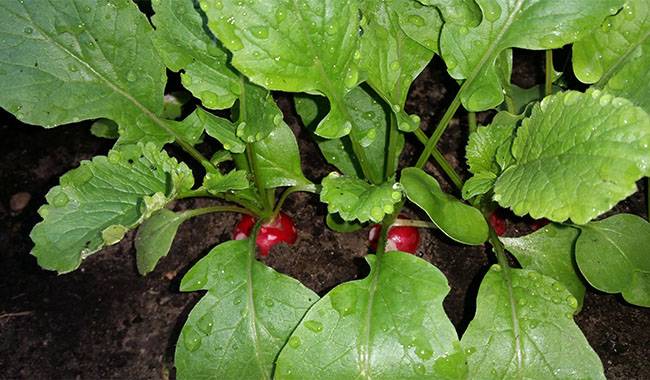
CONTROL OF FLEAS IN THE CRUCIFER FAMILY
To control cruciferous fleas, no one suggests using chemicals. We take the most dreaded allergen and put on protective gloves and respirators first – mustard, a very tiny pinch to be exact, sprinkled between the rows of radishes. You can also use cayenne pepper – up to a teaspoon of mustard and pepper per square meter. After that, you should cover the crop with non-woven cover material, forming something like a greenhouse for chemical attacks on fleas.
An original method of protecting radishes from cruciferous fleas.
Seven days before sowing radishes, it is necessary to sow watercress and mustard, and after another seven days, sow radishes between the rows of these crops. Let’s be like Sherlock Holmes: the fleas attack the shoots of their competitors, we use an approved insecticide that kills them exactly according to the instructions on the package, and then we have to wait for the radishes to sprout and cut down the useless plants that serve as bait. This method is likely to help, and you can try it.
Cabbage fly
The cabbage fly is said to be a terrible coward, and if you plant celery near your bed (usually on its periphery), it will certainly not approach your radish patch.
Clubroot
As we have already mentioned, acidic soil is dangerous for radishes due to scrofula. If you can determine the pH of the soil, or know that it is definitely acidic, we recommend that you add 150-200 grams of chalk, 250-300 grams of lime, or 250-350 grams of dolomite powder, per square meter of course, preferably for a year, but you can do it at least a month before sowing the radishes. Not a bad soil acidifier is wood ash, which, in addition, contains up to 5% potassium and a considerable component of trace elements, albeit in small quantities. You can sprinkle a layer of wood ash at the bottom of the hole and then sow the radish seeds on it.
So, as you know, it is as easy to grow fall radish as spring radish, and given that it stores quite well, you will enjoy its fresh root crop for a long time.
More related information about growing radishes plants




